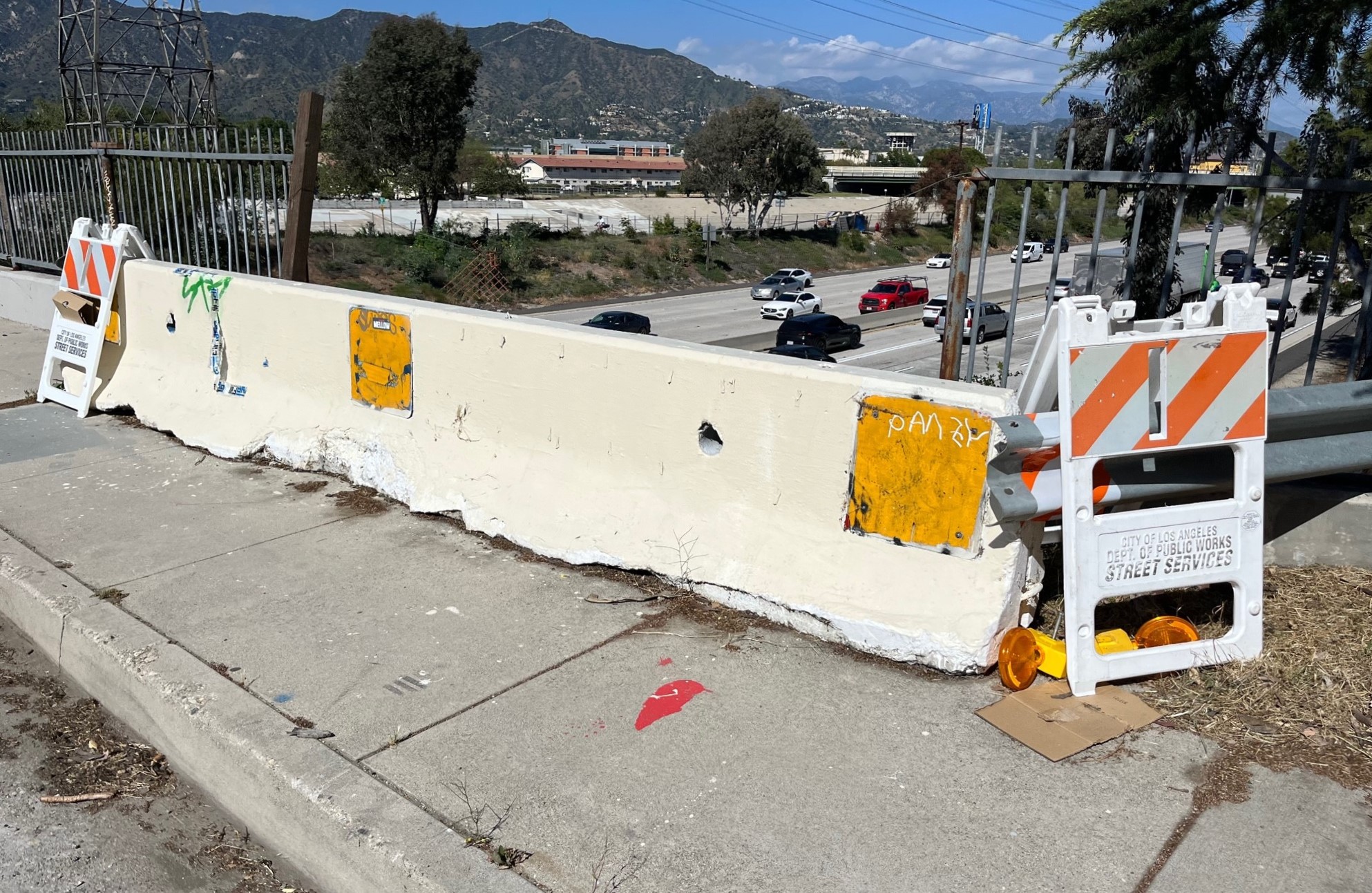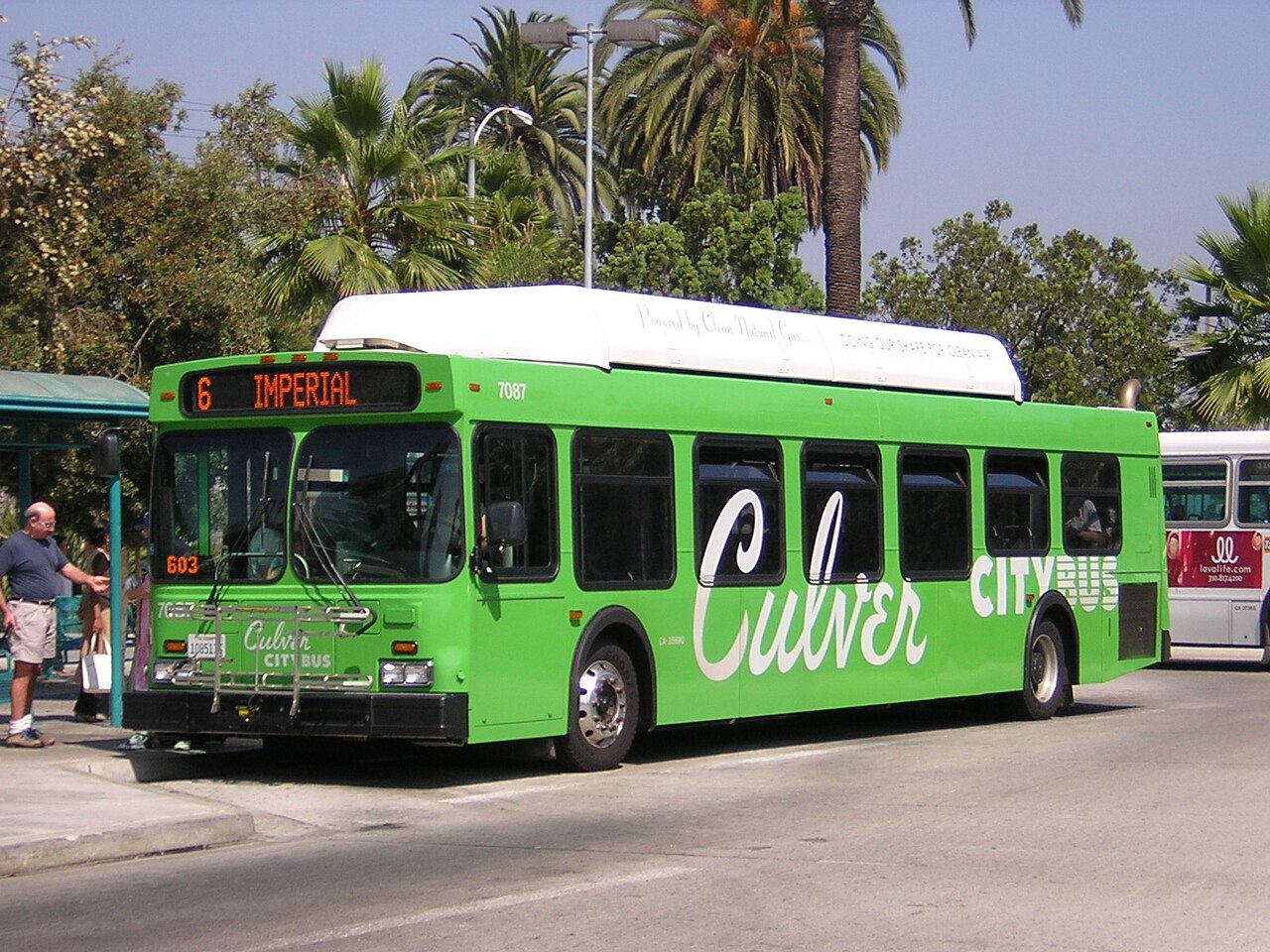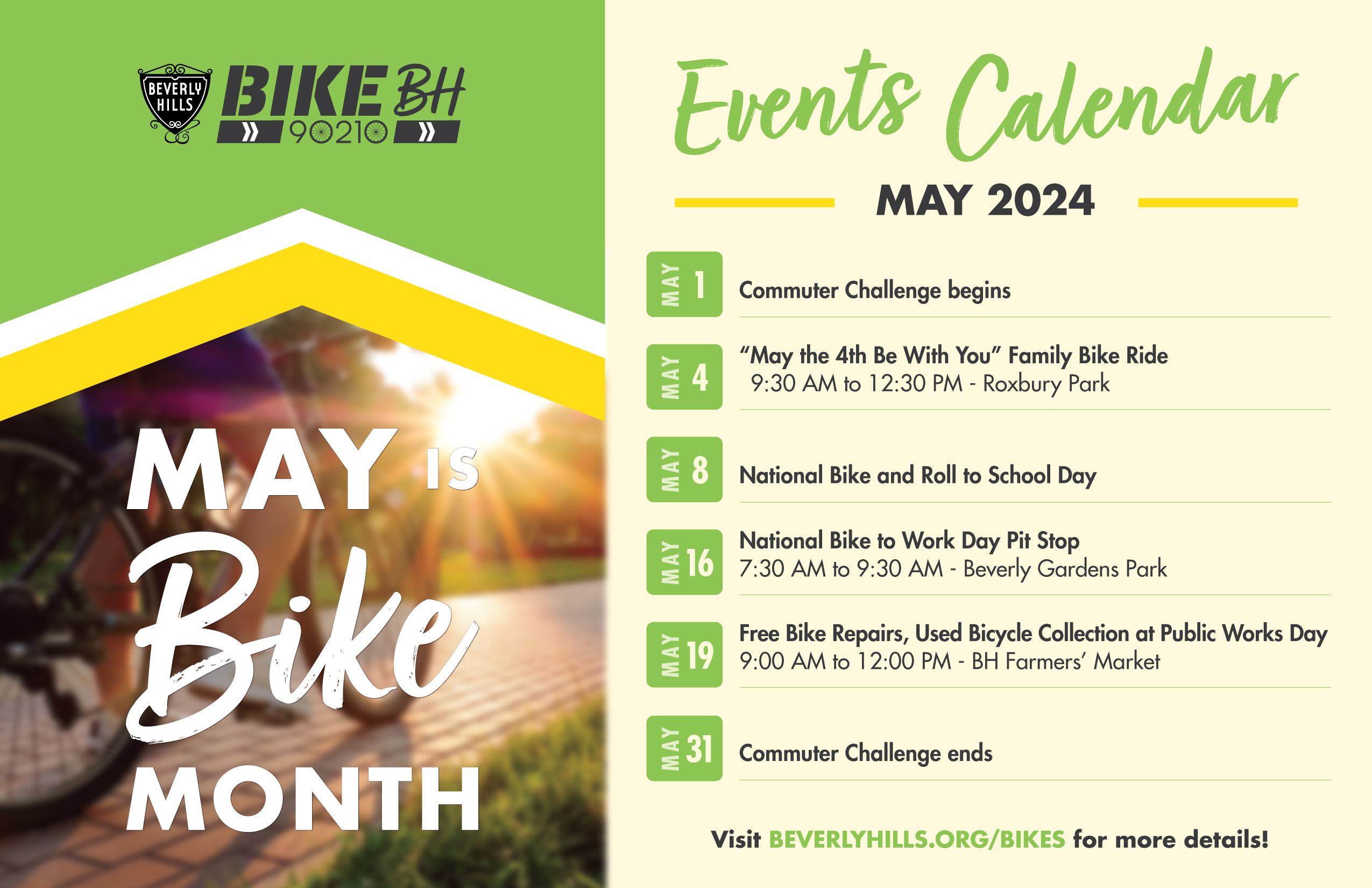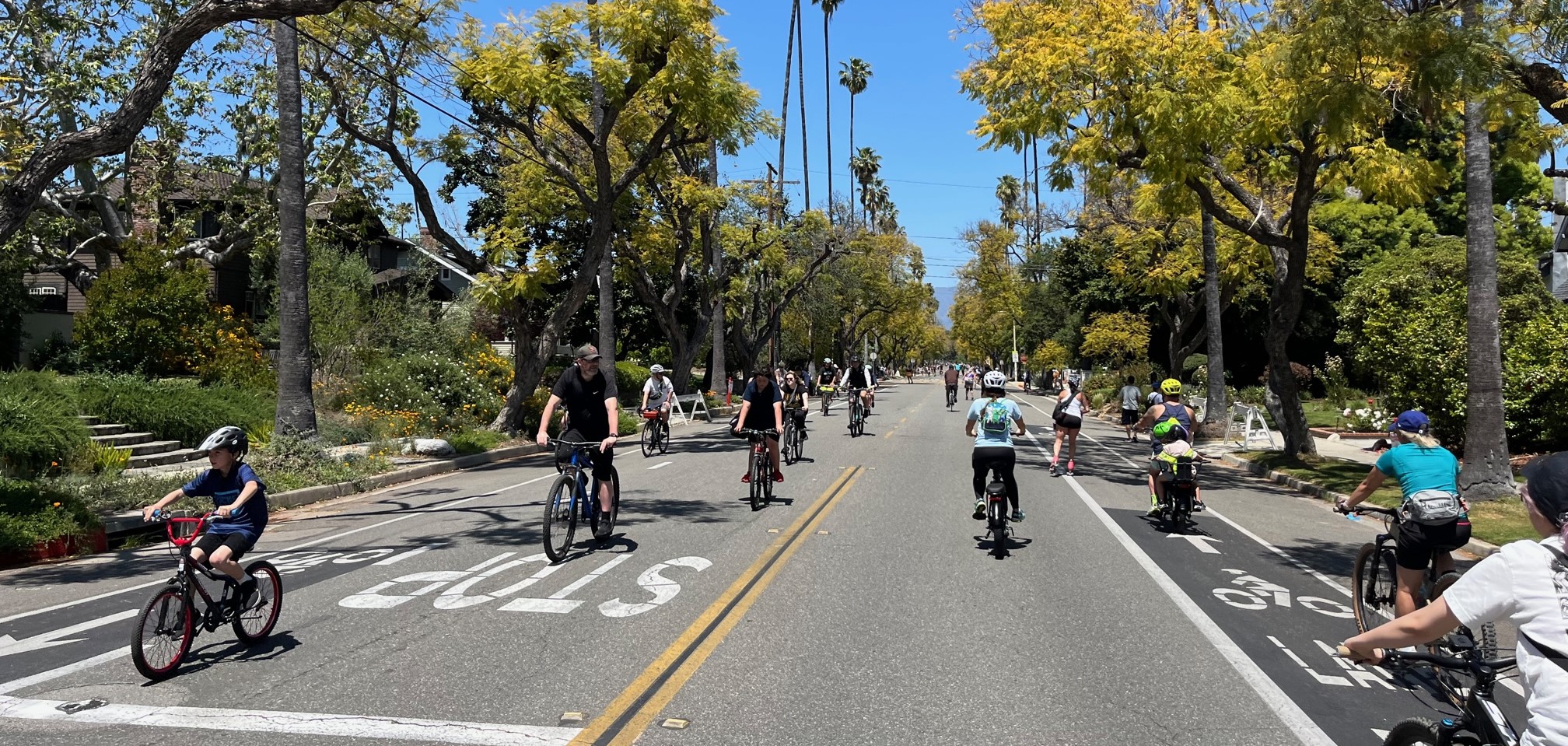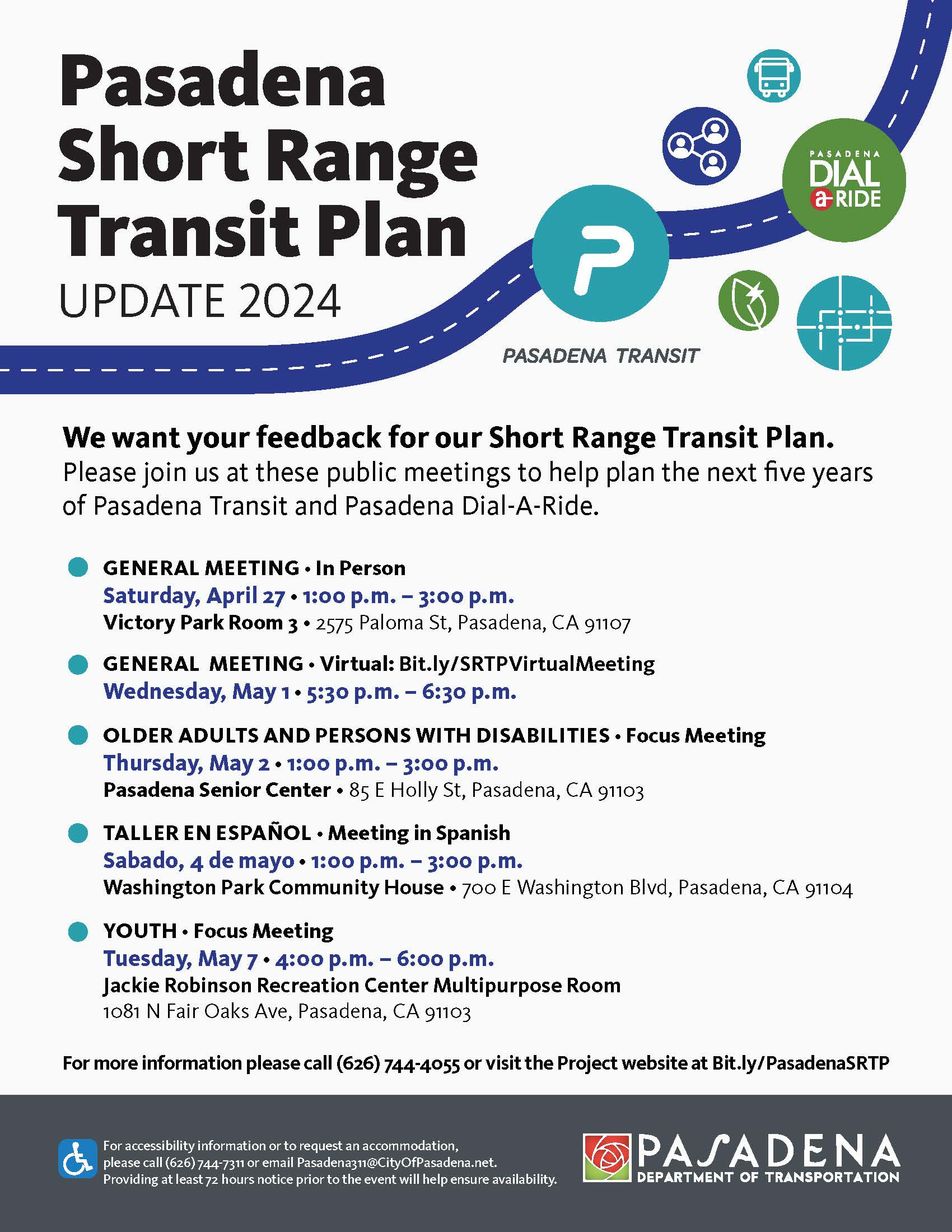You Can’t Plan Mexican Hot Chocolate: How Monique López Deploys a Justice Lens in Her Engagement of Street Vendors
7:18 PM PDT on June 27, 2018
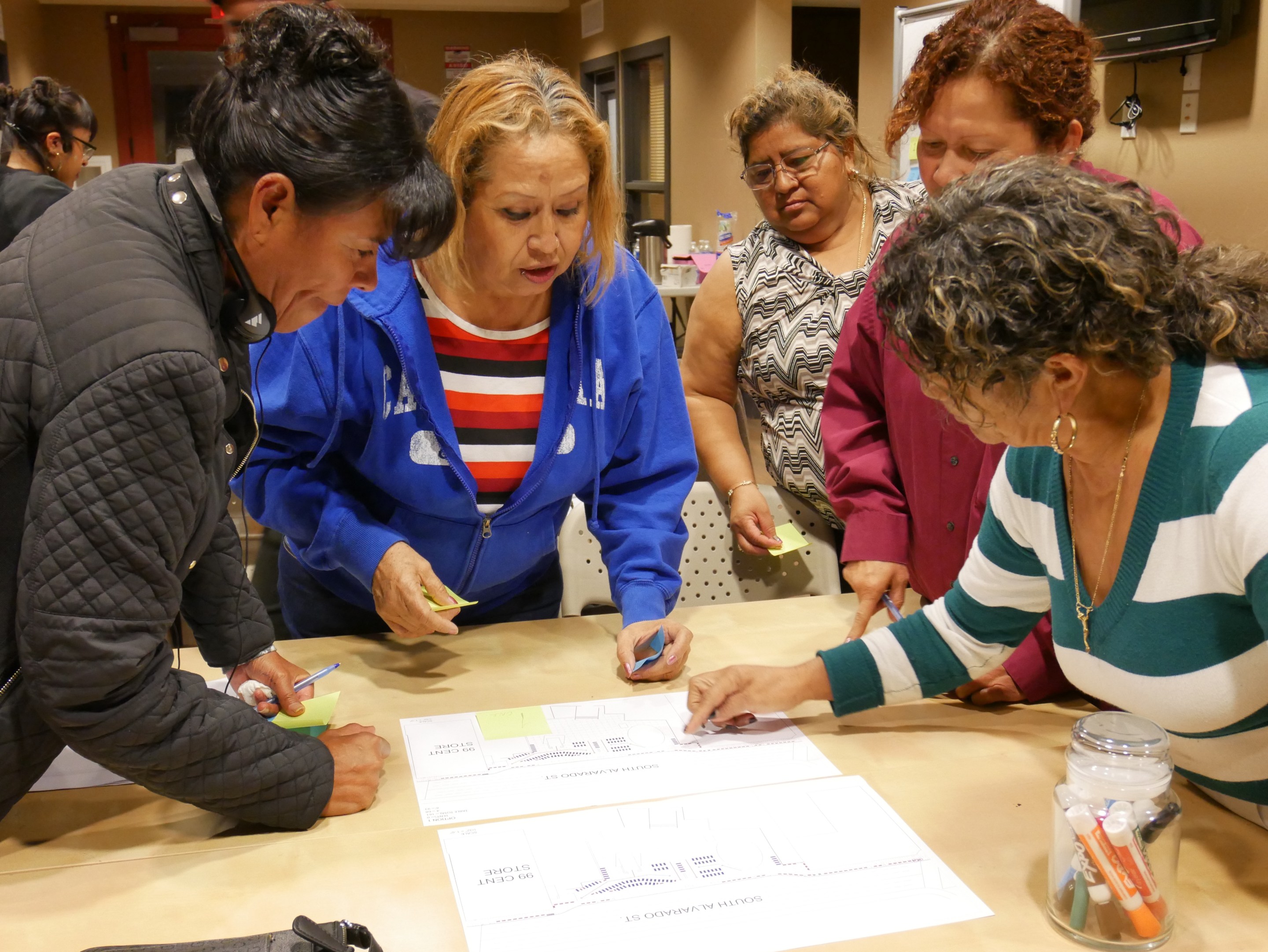
In a workshop led by consultant Monique López, street vendors weigh the pros and cons of alternative configurations of the MacArthur Park vending district. Image courtesy of Monique López
"I will never be able to do 22 years of observation for a particular planning project," says Monique López, the founder of the participatory planning and design firm Pueblo. "Never."
She is referring to Ofelia, a street vendor in MacArthur Park who had been selling clothing and other goods on the same sidewalks in her own community for over two decades.
Monique had met Ofelia while engaging area street vendors at the behest of Carla de Paz of the East L.A. Community Corporation (ELACC). A founding member of and active leader within the L.A. Street Vendor Campaign, ELACC had been receiving alarming reports that Metro's March, 2017, creation of a pilot vending district on the MacArthur Park plaza had resulted in greater harassment and displacement of long-time vendors like Ofelia who were not participants in the program.
Such an outcome was not particularly surprising, unfortunately.
The stated goals of the pilot program, launched in March of 2017, included "minimizing blight and disorder at the station, eliminating unpermitted street vending, reducing crime, ensuring safe boarding and alighting of bus patrons and transforming the station plaza into an inviting community environment," according to Metro.
Much like efforts to "revitalize" and "re-imagine" places deemed to not be "vibrant" enough, however, the characterization of a place as "disorder[ly]" and in need of being made into an "inviting community environment" always raises questions about whose vision of community is being elevated and to what end.
From Metro's perspective, that "end" is the shifting of their burden from "response-based" policing to "problem-oriented" policing via the building of public-private partnerships to more closely manage activity on the plaza.
To some of the area's vulnerable community members, on the other hand, the privileging of a particular understanding of "order" seems to require replacing an organic form of street activation – one forged by necessity and integral to the fabric and functioning of the community - with a more streamlined one that discounts and devalues vendors’ multifaceted connections to the community.
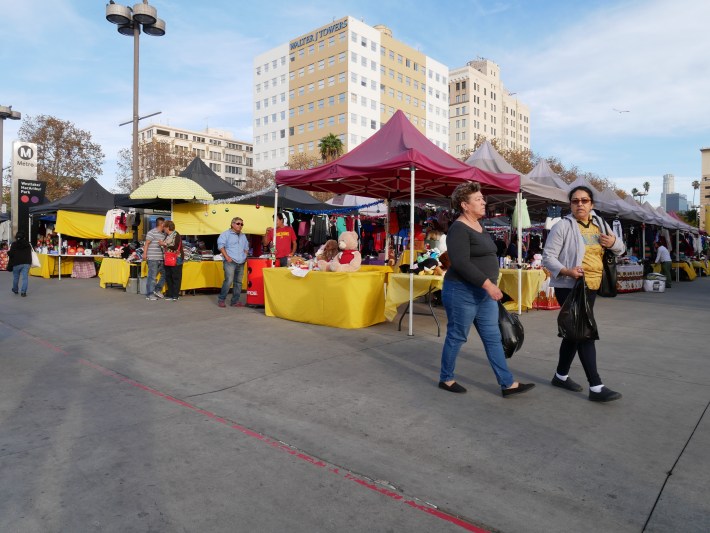
Despite the plaza and the streets surrounding MacArthur Park's subway station being some of the city's densest with regard to vending, the program placed just 34 canopied booths (68 vending spaces) on the plaza for use by local vendors. Those that wanted in on the program paid $20 a month for a permit to vend on the plaza and got extra security, access to restroom facilities, a reserved spot, and the ability to vend during set hours without fear of harassment from law enforcement in return.
Within two months of the launch, however, the advantage the program conveyed to participants had begun to shrink. News of the pilot had spread and attracted new vendors to the site, ratcheting up competition between those on the plaza and those that remained on the sidewalks. Some of the vendors who believed they were losing business to those outside the program abandoned it and reclaimed their former spots on the sidewalk.
Crackdowns on the sidewalk vendors around the plaza – facilitated by the doubling of the police presence on transit and at stations (thanks to Metro’s new security contract) and the city’s continued failure to finalize a street vending ordinance – helped tip the balance back in favor of those on the plaza.
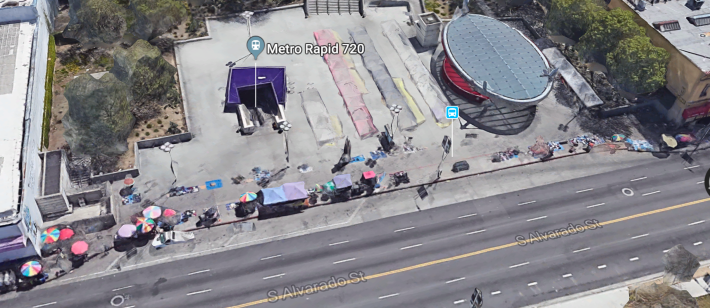
Vendors’ displacement from the site put space on other nearby streets at a premium. Some began reporting to ELACC that they were rising earlier – a few even reported sleeping out overnight - to claim spaces and earning less.
And although vending had been decriminalized in February, 2017, formal legalization has continued to lag. Consequently, the increased police presence and more sustained crackdown both left the vendors more fearful of losing their livelihoods and chased away some of their customers who feared that lingering to make purchases could attract officers’ attention.
By last November, the crackdown had been so disruptive that vendors and supporting members of the Street Vendor Campaign protested outside the LAPD’s Rampart Station to denounce ongoing displacement and harassment around the plaza.
It was at this point that Monique was called in to engage the at-risk vendors. Not to engage the content of the pilot program, which had already been determined by Metro, in collaboration with councilmember Gil Cedillo’s office, County Supervisor Hilda Solis’ office, Central City Neighborhood Partners, and the Unión Popular de Vendedores Ambulantes. Instead, she was asked to assist the vendors in mapping an alternative vision of an inclusive and community-serving configuration that also addressed Metro’s concerns by explicitly creating ADA compliant space for transit riders and pedestrian passage.
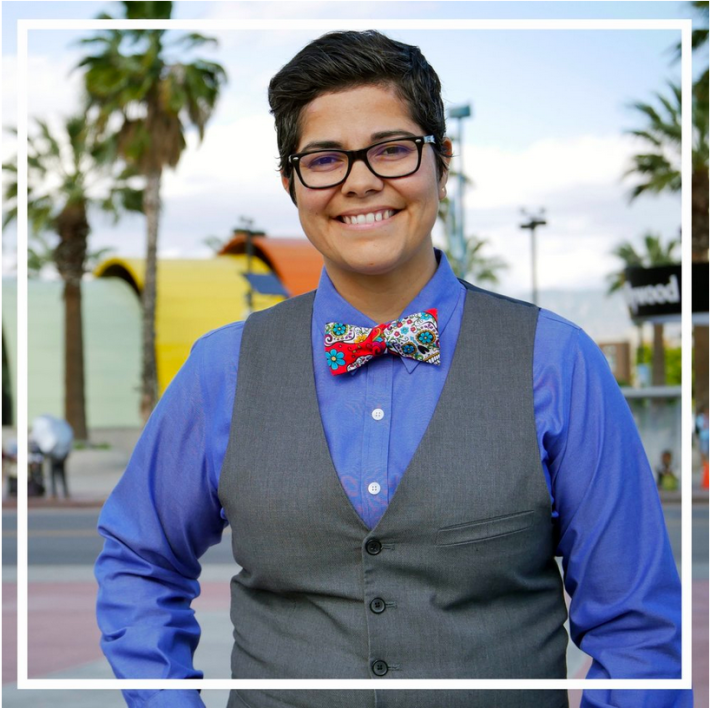
Because of the urgency of the vendors’ plight and the desire to offer alternatives before the program was formalized, Monique was asked to move quickly. She only had a few weeks to do a full site assessment, engage the vendors, and synthesize their current concerns and visions in a report.
Even with that pressure, Monique still felt it was imperative to begin, as she always did, with the basics: How does this ecosystem work and what does it need to thrive?
They were questions that had not been centered either in the planning around the pilot district or in the debates around the vending ordinance.
As a result, the vendors – as the object of regulation – had largely been treated as interchangeable units, not members of the community whose relationships, culture, and history tied them to specific spaces, places, and people. And there seems to have been no consideration of how disruptions to vending could potentially shake that ecosystem to its core, leaving the larger community less resilient, less cohesive, more financially insecure, and, ultimately, more vulnerable to displacement.
Having cut her teeth protecting her own lower-income community of color from further environmental harm, Monique was particularly attuned to the significance of social networks. She had also been privy to the power of those networks the first time she informally scouted around the area. Vendors who spotted her nosing around immediately began checking in with each other and ELACC to make sure this loitering stranger meant them no harm. [Later, after the formal engagement process had begun, vendors from around the community would often offer her champurrado (Mexican hot chocolate) when they spotted her in the street as a way to communicate their acceptance of her and their gratitude]. So when she first sat down with a group of 25 to 30 vendors who were at-risk for displacement, she opened the workshop with questions about how they understood their relationship to the space, to passing pedestrians, to each other, and to the community they served.
Firm in the belief that no amount of research or observation she conducted could compare to the knowledge the vendors had cumulatively amassed over decades, Monique focused on creating opportunities for them to educate her.
In the process, she heard that decisions vendors made about how to occupy space countered many of the prevailing narratives about how vendors operated.
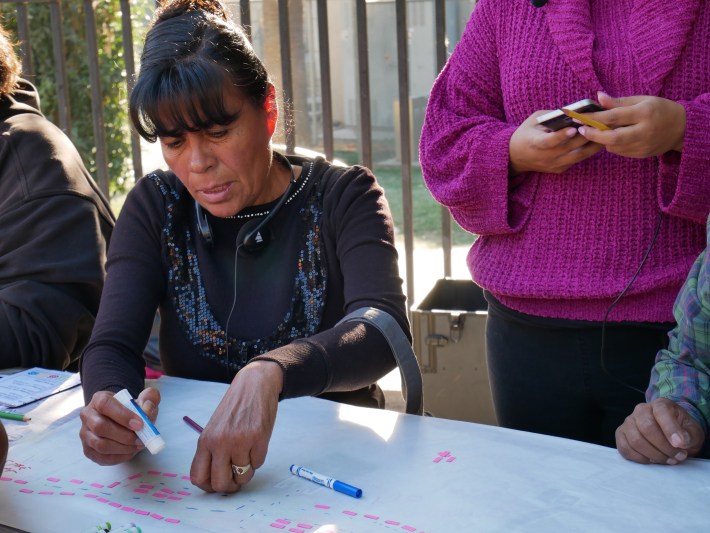
Instead of trying to selfishly take up as much space as possible (a common refrain used to justify crackdowns), Monique found the vendors’ decisions about where to set up were more rooted in their relationships and an intimate knowledge of how their community worked. When asked to map these social preferences spatially (above), they were able to come up with more inclusive configurations that accounted for the need to be near friends (for companionship, safety, and mutual assistance) yet were spaced far enough away to avoid getting on each other’s nerves, the need to avoid spaces that hosted activities they didn’t want to be associated with, the preference for smaller tables if it meant 30 or 40 more colleagues could access the space, and an overarching respect for pedestrian patterns and access.
Had she gone a more traditional route and approached engagement by first proposing alternative configurations for the vendors to work with, says Monique, she likely would have gotten them wrong. Moreover, she says, asking the vendors to lead the way, present their solutions to each other, and engage each other’s designs created space for them to share strategies and best practices with each other.
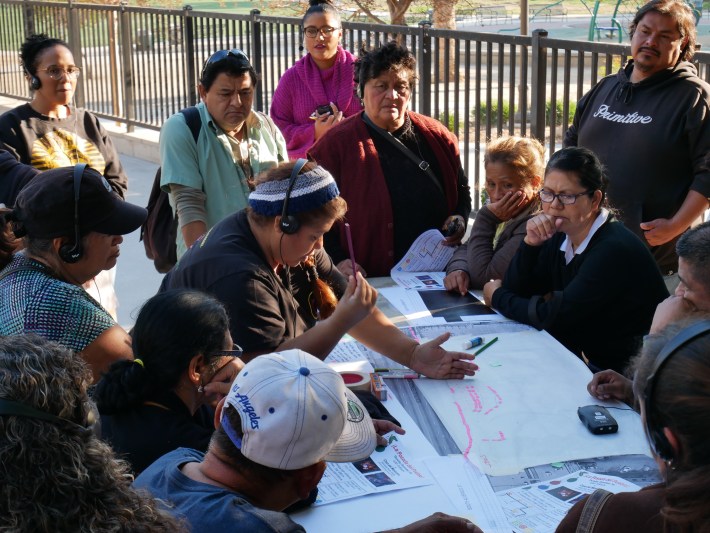
That kind of knowledge-building within the group was notable, she says, because planning can be very extractive. Planners engage communities to inform the shape specific projects take, but tend to do so in a way that minimizes context, limits communities’ input to fit within narrow categories, and offers participants little in return. Investment in the building of real relationships, particularly with marginalized communities, has rarely been an end in and of itself. Even the People’s Plan process – the unique effort by South Central advocates to see protections against development that took advantage of the legacy of disenfranchisement included in the area’s community plans – had to be initiated and sustained by community organizers over the course of a decade.
Leaving groups with improved capacity to serve as their own advocates is even more rare. But it is something Monique sees as integral to her work.
In this particular case, she says, she wanted to ground-truth the number of people moving through the space to engage authorities’ claims that the vendors were impeding sidewalk access.
To that end, she had the materials for bike and pedestrian counts translated into Spanish and trained the vendors on how to conduct counts.
As vendors stood on corners, clipboards in hand, vendors from outside the focus group approached to ask if they, too, could be taught to conduct counts. They had also been harassed by law enforcement and told they were hindering passage while in their regular spots, even though their own experience and informal observations told them otherwise. A tool that helped them generate actual data, they felt, could help substantiate that they were an asset, not an obstacle.
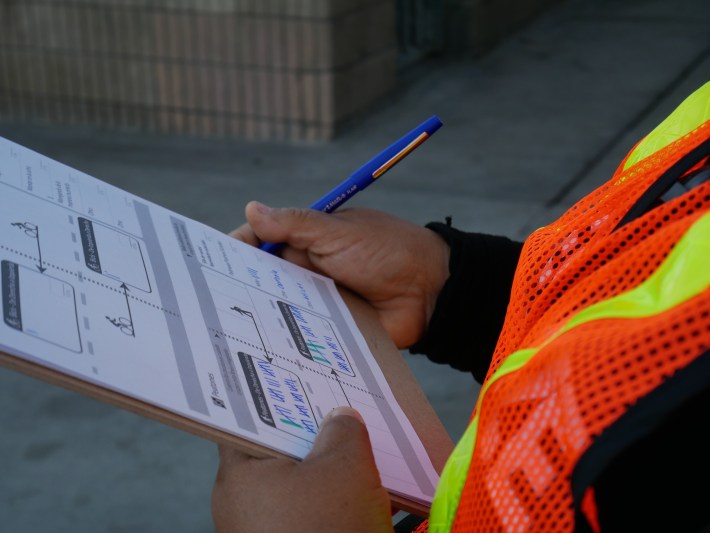
Watching those conversations unfold, Monique saw her approach to engagement being validated in real time.
As she described in the first part of our conversation (below), she feels that while planning has deliberately harmed lower-income communities of color, the same tools once used against those communities, if put in marginalized residents’ hands, could be used to begin to undo some of that damage. [Read the article that accompanies the audio, here.]
It’s an approach that, in some ways, is a tacit recognition of the stubborn inertia of harmful structures.
Justice advocates often find themselves asking if the best way to dismantle such structures is to throw stones from outside the system or to work to move the needle from within.
Monique has found that her way forward includes doing a bit of both. She grounds language and tools from existing paradigms in place, culture, and experience, infuses them with new meaning, and uses them to illuminate more contextualized and inclusive visions of community. And in making these repurposed tools accessible to the communities she works with, she opens up new channels through which residents on the margins can begin to change the narratives that are so often used against them. She drew on recent design guidelines regarding the importance of referencing a community’s culture in the quest to create vibrant spaces, for example, using them as an opening to underscore the vibrancy that already exists in MacArthur Park, reframe the vendors as a unique and vital part of a living organism, and center the social networks needed to sustain it. It’s an approach that stands in stark contrast how L.A. has conceptualized “vibrancy” in the last few years – which has been more focused on the physical infrastructure needed to “reclaim streets for people” and facilitate the “activation” of spaces while largely excluding vending and all that it represents from that paradigm altogether.
Communities are living organisms, Monique reiterates, and need to be respected as such.
And in disenfranchised communities of color, in particular, the precariousness of the well-being of those ecosystems requires that extra attention be given to safeguarding and uplifting the bonds that residents have forged despite decades of denial of resources. Which means setting aside technical questions of how many vendors should occupy a space for a moment and looking instead at what needs to happen to ensure social safety networks can not only remain intact, but thrive. Looking at providing the kinds of activities, tools, resources, and space for dialogue needed to aid participants in communicating the full complexity of their realities. Being cognizant of power dynamics within the community and how interventions might play into them. Considering what is not being heard, who is not being heard from and why, and how those omissions matter. Synthesizing data gathered in ways that push the boundaries of planning frameworks. And being cognizant of and honest about one’s limitations as an “expert.”
Without this kind of explicit self-reflection and social site analysis, Monique says, planning is likely to sow greater disharmony, disrupt the very activities it hopes to foster, and further perpetuate existing harms in vulnerable communities.
"Planning...has all the best intentions,” she says of her chosen profession. “But sometimes that sense of community that's given to you by a Mexican hot chocolate - you can't plan that. But what you can do as a planner is set up a process that respects community. Set up a process that truly honors that residents are the true neighborhood experts. And set up that process so that sense of community or all the things that tactical urbanism, or complete streets, or whatever the next big thing in planning is hoping to create...naturally continue to exist."
***
Please take a listen to the full conversation with Pueblo's Monique.
In it, she goes into greater depth regarding her approach - how she approached conversations with vendors regarding their needs, how her own background and connections to community-based organizations facilitated her work, how and why context matters in site assessments, the importance of acknowledging who she didn't reach, and how she managed to accomplish so much within two weeks' time.
With regard to where things stand for Metro's pilot program, Councilmember Gil Cedillo’s office says it will be conducting public engagement to gather input on the next phase of the pilot later this summer.
With regard to where things stand for street vendors, more generally, city staff were expected to have come back to the city council with a draft vending framework earlier this month. This past April 17, the council adopted the Economic Development Committee's report, which essentially created the pathway for the formal legalization of vending. But the draft framework has not yet made a public appearance, nor has a hearing on it been scheduled. While the "business veto" - the right of brick-and-mortar businesses to veto the ability of vendors to set up in front of their businesses - was taken off the table, limitations on how many vendors can vend per block and the potential for them to be banned from communities altogether (like the Hollywood business district) are still in the mix. [Find the relevant city council documents, here.]
Sahra is Communities Editor for Streetsblog L.A., covering the intersection of mobility with race, class, history, representation, policing, housing, health, culture, community, and access to the public space in Boyle Heights and South Central Los Angeles.
Read More:
Stay in touch
Sign up for our free newsletter
More from Streetsblog Los Angeles
Freeway Drivers Keep Slamming into Bridge Railing in Griffith Park
Drivers keep smashing the Riverside Drive Bridge railing - plus a few other Griffith Park bike/walk updates
This Week In Livable Streets
Bike Month, Hyperion street safety, Eastside rail plans, Pasadena transit, CicloIRVINE, Culver City bus service, and more
Active Streets Mission-to-Mission – Open Thread
Tens of thousands of participants biked, walked, skated and scootered on car-free streets through San Gabriel, South Pasadena and Alhambra
